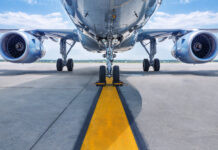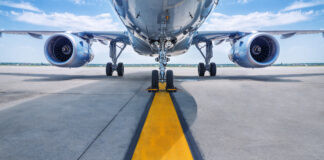

During November 2022, Latin America and the Caribbean (LAC) remained the region with the best level of recovery in the world. Specifically, 29.2 million passengers were transported in the region, 97% of the passengers of November 2019. In the accumulated from January to November, about 298 million passengers were transported, 9.9% below its 2019 levels.
November’s data reflect significant progress on the path of recovery compared to October, when 92% of 2019 levels were reached. LAC’s figures exceed those of North America which stood at 92% of its 2019 levels, the Middle East 88%, Europe 81%, Africa with 80% and Southeast Asia, the region with the least recovery, with 74%.
With regard to international passenger traffic, the Dominican Republic, Colombia and Mexico once again led the recovery path in LAC with 22%, 17% and 11% growth, respectively. Chile and Argentina reached 89% and 78% of their 2019 levels, respectively.
Read more: IAG moves to a Latin beat
As for domestic traffic, Colombia and Mexico achieved outstanding growth, exceeding 13% their 2019 levels. Argentina advanced with 97% and Chile with 96% of its pre-pandemic levels. Domestic RPKs showed the greatest recovery with 2.9% above their 2019 levels.
The challenge
According to the IMF, the weight of food in the consumption basket, which has been significantly affected by inflation, represents 25% of the basket, so it is likely that the resources allocated to travel can be reduced in this scenario of economic contraction.
“At the operational level, the reduction in global economic growth expectations, high inflation rates, devaluation of the region’s currencies against the dollar, a very high cost of the main input to provide the air transport service that is fuel, among other aspects, affect significantly,”
José Ricardo Botelho, Executive Director and CEO of ALTA, said.
In 2022, fuel maintained historically high prices. On December 27, the price of jet fuel reached 138% above January 2021, while the price of West Texas Intermediate (WTI) crude oil reached 79%. This increase has had an impact on the weight of the input in the cost structure of airlines, going from representing 28% a year ago to almost 50% in Q3 2022.
Although in recent months it fell compared to its peak of US $190 (April 29, 2022), with US $128 (December 26) it represented 50% more than in December 2021, Botelho stresses.
“2023 has its own challenges. The potential drop in demand for air transport services caused by an economic recession, mixed with the economic challenges for the operation, especially inflation, devaluation and high costs, may be barriers to the recovery of this industry that in 2022 lost US $ 2 billion in LAC. 2023 is a challenging year, yes. But also of immense opportunities. We have before us the opportune opportunity to strengthen the articulated work between authorities and industry in favor of the passenger and in favor of an industry that generates development. Together we fly higher!,” Botelho said.











